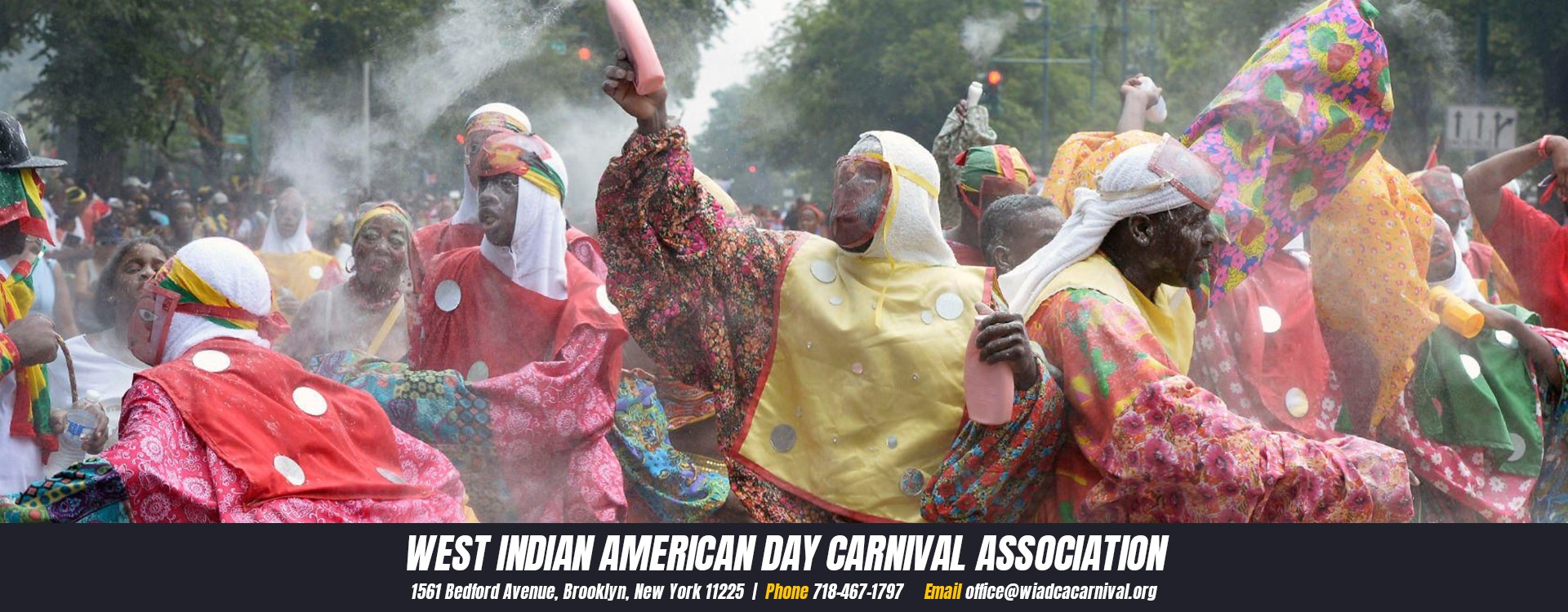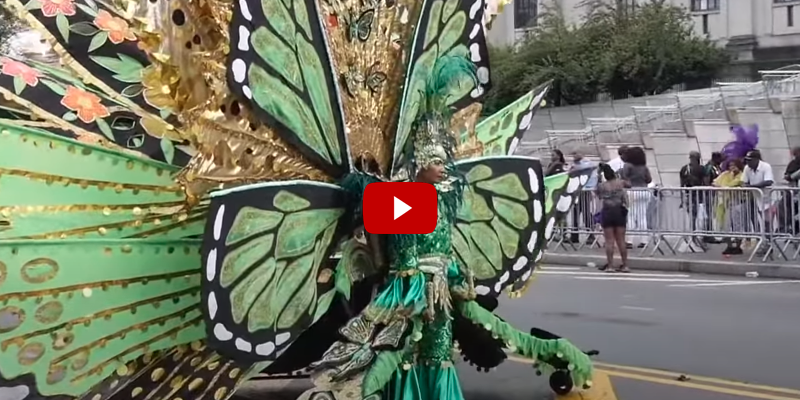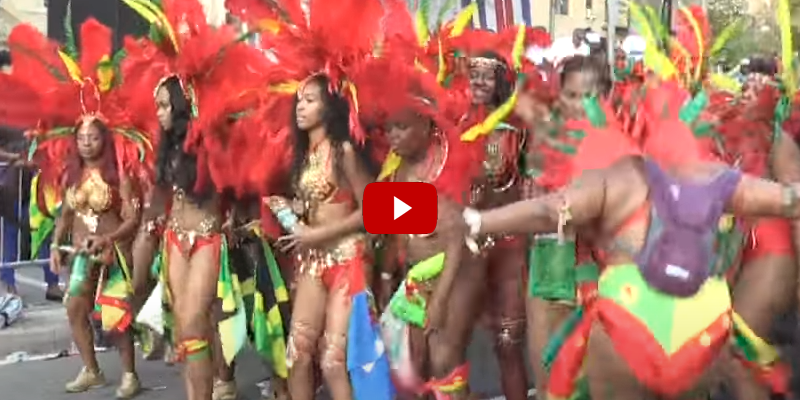

NY Carnival
“MAS” is the shortened form of the word “MASQUERADE”. The event of Mas goes back to the days of slavery, when on the plantation the Lords and Ladies would gather to have Masquerade Balls. One such event among the French colonials was Mardi Gras. The slaves derived their own version of this gathering to mimic their owners. These portrayals are what are known today as “Traditional Mas”.
The persons gathering in a group referred to as “The Band”, are “Masqueraders”. Dressed in “costumes” some often based with a wire framework decorated with fabric, beads, feathers and material of bright regality, depict a theme created by a designer. Themes are often represented by characters dressed to portray or capture the story. There are often “sections” which capture various aspects of the theme.
Mas Bands can be as small as just a few characters to as large as hundreds of persons dressed in costumes/character. Some bands have large portrayals which are referred to as “King”, “Queen” or “Individuals”. These are usually magnificently designed and are often a sight to behold for the spectators.
Terms often referred to in Carnival
- “Playing Mas” is often used by an individual who is part of the costumed contingent and dressed in character.
- “Kiddies Carnival” or “Children Carnival” features bands that are costumed children up to the age of 17.
- “Traditional Mas” features characters derived from African folklore and memes from the plantation. These characters include “Dame Lorraine”, “Midnight Robber”, “Pierrot Granade”, “Jab”, “Babydoll” and “Bat”.
- “Ole Mas” features characters dressed to make satire of some aspects of society – such as political heads, an incident that was prominently newsworthy.
LABOR DAY CARNIVAL 2020
LABOR DAY CARNIVAL 2016


